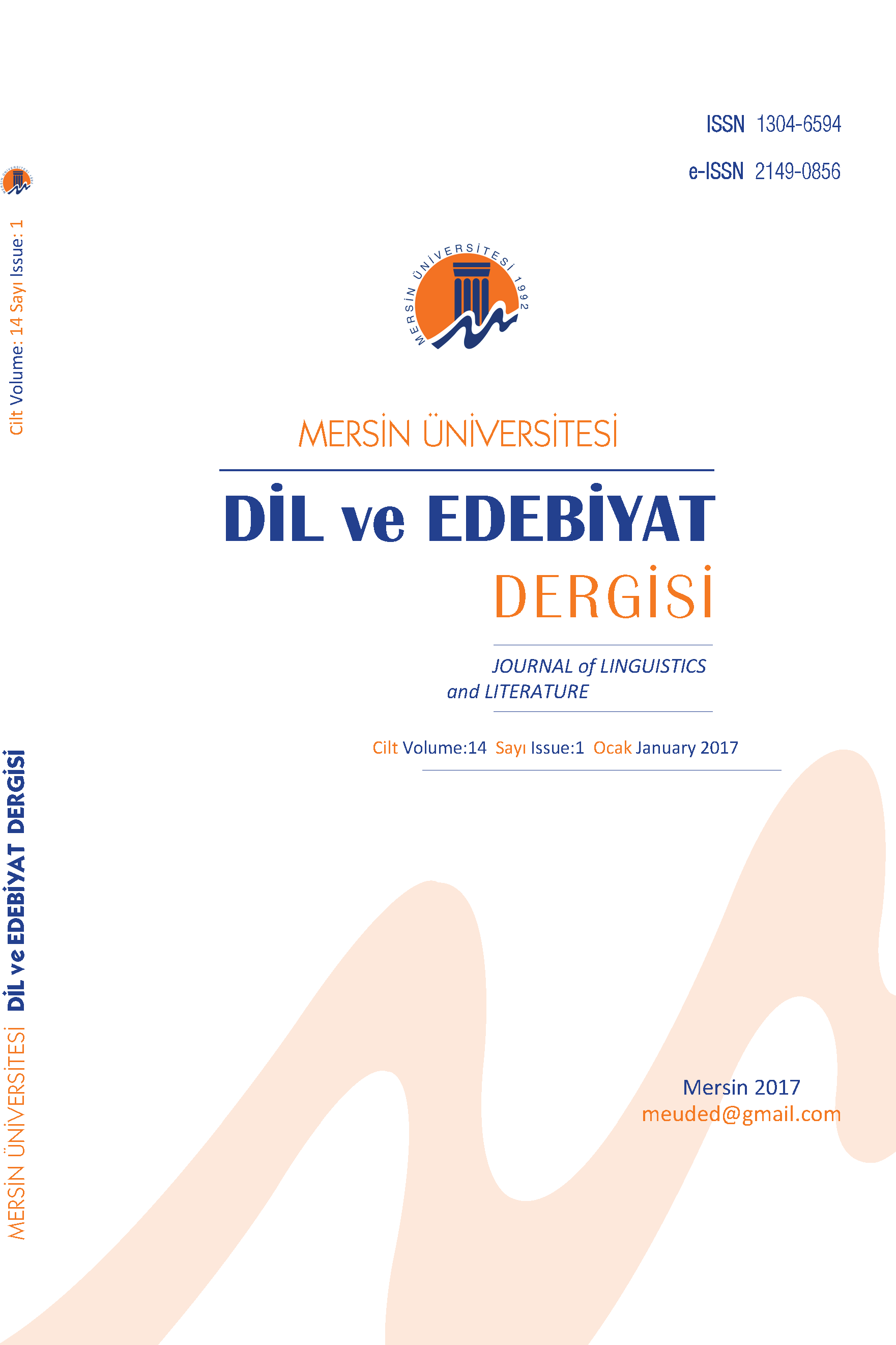Morpho-Syntactic Character Of Additives: A Descriptive Approach to Additives in Asian Sov Languages
Traditionally Turkish is considered as an SOV language and a member of the Altaic Languages. In this sense, most of the previous contrastive studies have been done by using the data from the Altaic languages. Contrary to this method, this study focuses on additives in SOV languages of Asia which are considered to be in different families. It must be noted that even if language families are clearly differing from each other, additives show almost same or similar behaviors that, could be considered as a universal process, independent of geographical distribution.Keywords: SOV languages, additives, particles, clitics, Asian languages
Anahtar Kelimeler:
ÖNE dilleri, ekleyiciler, parçacıklar, kaynaşıklar, Asya dilleri
-
Traditionally Turkish is considered as an SOV language and a member of the Altaic Languages. In this sense, most of the previous contrastive studies have been done by using the data from the Altaic languages. Contrary to this method, this study focuses on additives in SOV languages of Asia which are considered to be in different families. It must be noted that even if language families are clearly differing from each other, additives show almost same or similar behaviors that, could be considered as a universal process, independent of geographical distribution.
Keywords:
SOV languages, additives, particles, clitics, Asian languages,
___
- Dönük, D. (2005). Additive enclitic suffix –dA in Turkish as a cohesive device. Dil Dergisi, 130, 54-67.
- Göksel, A. and Özsoy, A. S. (2003). dA: A focus/topic associated clitic in Turkish. Lingua 113 (11), 1143-1167.
- Göksel, A. and Kerslake, C. (2005). Turkish: A comprehesive grammar. London: Routledge
- Kerslake, C. (1996). The role of connectives in discourse construction in Turkish. In A. Konrot (Ed.), Modern Studies in Turkish. Proceedings of the 6th International Conference on Turkish Linguistics. 1214 August, 1992. Eskişehir, Turkey,. (77-104).
- LaPolla, R. J. and Huang, C. (2003). Agrammar of Qiang, with annotated texts and glossary. Berlin: Mouton de Gruyter.
- Lewis, G. L. (1967). Turkish grammar. Oxford: Clarendon Press.
- Nakanishi, K. (2006). Even, only and negative polarity in Japanese. In the Proceedings of the 16 th Semantics and Linguistics Theory, SALT 16, (138-155). Pardeshi, P., Hook, P., Masica, C. P., Ido, H. B. S., Horie, K., Dorjkhand, J., Kim, J., Mori, K., Chandralal, D., Koul, O. N., Liang, H., Murakami, Y., Thepkanjana, K., Li, Q., Vasireddi, P. and varma, T. (2006). Toward a geotypology of EAT-expressions in languages of Asia:Visualizing areal patterns through WALS. Gengo Kenkyu 130, 89-108.
- YuWen Sekizinci Sınıflar için Dilbilgisi (2004). Shinjian Eğitim Yayınları. Çin.
- İlkokullar için Dilbilgisi. (2003). The Nationalities Publishing House of Yunnan.
- ISSN: 1304-6594
- Yayın Aralığı: Yılda 2 Sayı
- Başlangıç: 2004
- Yayıncı: Mersin Üniversitesi
